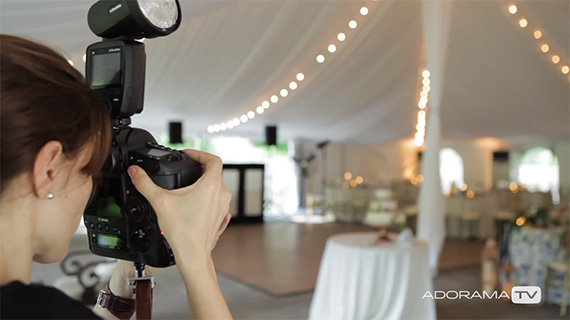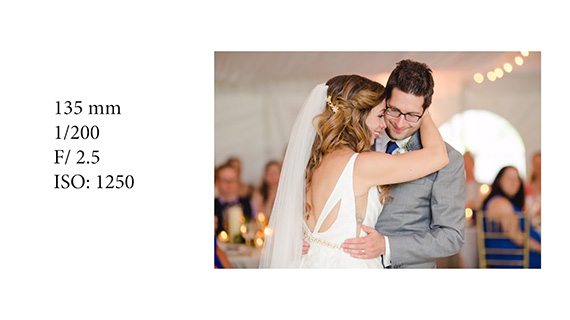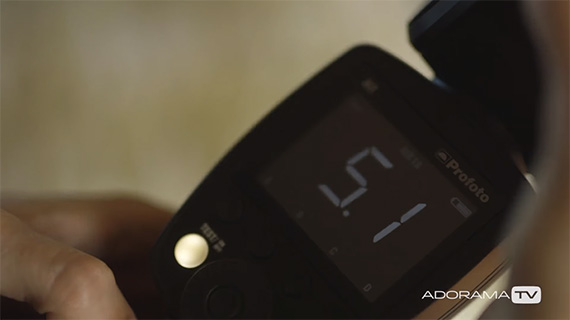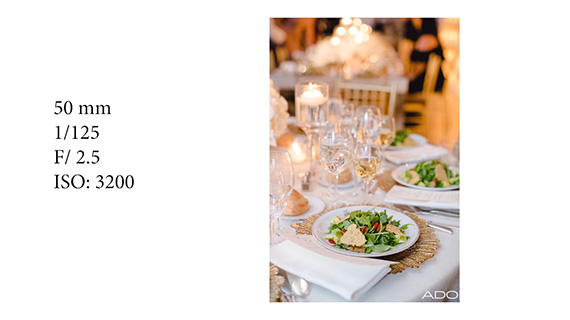Bouncing a flash is often the only viable technique to quickly expose for a photo in a fast changing scenario. Take a wedding reception, for example. Hopping from one room to another and one lighting scenario to the next, a photographer has very little time to adjust to the changing light. If you’re working with a strobe, it can quickly become a nightmare. The solution is an on-camera flash that you can bounce, as Vanessa Joy from Adorama demonstrates:
Joy has never been a fan of using off-camera flashes at wedding receptions; she prefers to use an on-camera flash. For this video, she uses a Canon 1DX II with a Profoto A1 AirTTL. But most of the time she bounces it.
Bouncing an on-camera flash is more difficult than it seems. Even pro photographers sometimes have confusion about the correct way to do it. Here are some tips that Joy shares:
1. Look for light colored walls
Light colored walls reflect almost all of the light back to the scene. A dark colored wall, on the other hand, will absorb most of the light. Also, a dark colored wall imparts its own characteristic to the light, therefore putting your white balance setting haywire.
2. Bounce in the right direction
While a lot of photographers know why they should bounce the flash, they sometimes don’t quite understand which direction to bounce. Point at a wall or a ceiling that points toward your subject’s face so the light reaches the subject and doesn’t simply disappear into oblivion.
3. Use TTL, but compensate
Use TTL for your exposures, but be prepared to bump up the exposures by a stop or more depending on the size of the room and the particular situation.
4. Choose a higher ISO
Set your ISO to a higher number. It’s always a balance between how hard you want your flash to work and how much grain you can accept. Make your own decision here, because you don’t want too much of either.
5. Practice
Once you get an idea of what to do, make sure that you practice as much as you can. Maybe things will not come together on your first attempt. Practice at a few receptions until you have mastered the technique.
Do you have any tips to add? What works best for you when you’re bouncing flash?
Like This Article?
Don't Miss The Next One!
Join over 100,000 photographers of all experience levels who receive our free photography tips and articles to stay current:










Leave a Reply